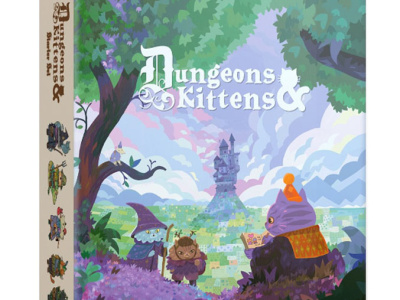Initial raw dollar orders on comics and graphic novels from comic stores continued to decline in February vs. the previous year for the fifth consecutive month, but the rate of decline slowed to under 1%, the smallest drop since the drop-off started at the beginning of the fourth quarter last year. Periodical comics were actually up nearly 6%, with only a 41% drop in graphic novel orders dragging the total numbers negative. The graphic novel numbers suffered from weaker releases, with Lone Wolf and Akira volumes from Dark Horse, the Origin hardcover from Marvel, the History of the DC Universe, and the Image Comics 10th Anniversary hardcover in the top five in February 2002 all with little to compare this year.
These orders were made in January, after several months of declining orders. Given that the rate of decline is dropping, it indicates that comic store sell-throughs probably improved during January, as the lower orders more closely matched actual demand.
Consistent with recent trends, February 2003 orders were up substantially vs. 2001 and 2000. Comics were up 19% and graphic novels up 13% , for a total 18% increase vs. 2001. Comics were up 9% and graphic novels up 15% for a total 9% increase vs. 2000.
The dollar estimates discussed in this article are based on ICv2 estimates of initial raw orders to Diamond North America on titles scheduled for shipment in February 2003.
Marvel, DC, Dark Horse and Image distribute 100% of their comic store orders through Diamond. Some other publishers distribute directly to stores or through other distributors and as a result this analysis may underestimate their sales.
Marvel, DC, Dark Horse, and Image distribute some of their titles through channels other than comic specialty stores, e.g., newsstands and bookstores. These quantity estimates do not reflect distribution through those channels.
The quantities above do not include advance reorders, late orders, or reorders.
Most of the titles on this chart are also distributed to Europe by Diamond UK, which can account for significant sales for the publisher, ranging from 3-20% of the US numbers. Sales by Diamond UK are not included in the numbers above.
Even given the above, however, it is probably safe to say that these quantities reflect 80% or more of the total North American sales by the publisher on most periodical comics.
One other factor to consider is that sales through Diamond and other comic distributors are non-returnable to retailers. That means that there is a considerable unknown percentage of books unsold at the retailer level. If that percentage is 10-20% of sales (a reasonable assumption), the estimates above may be quite close to actual sales to consumers.
For overview and analysis of the comic and graphic piece orders in February, see 'Batman Continues To Climb in February.'
For a listing of the top comics ordered in February, see 'Top 300 Comics -- February 2003.'
For a listing of the top graphic novels ordered in February, see 'Top 50 Graphic Novels -- February 2003.'
For an over-view and analysis of the best-selling comics and graphic novels in January, see 'Batman Tops January Comics.'
For the top 300 comics in January, see 'Top 300 Comics--January 2003.'
For the top 50 graphics novels in January, see 'Top 50 Graphic Novels--January 2003.'
For links to all of the Top 300 Comic and Top 300 Graphic Novel orders, see our 'ICv2's Top 300 Comics & Top 50 GN's Index.'







